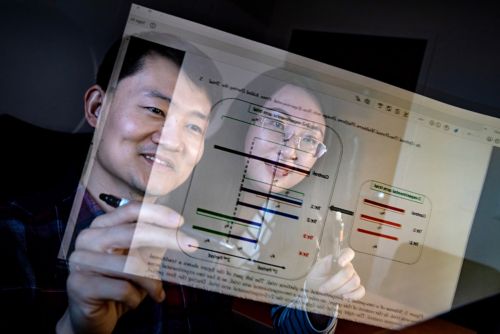St. Jude Family of Websites
Explore our cutting edge research, world-class patient care, career opportunities and more.
St. Jude Children's Research Hospital Home

- Fundraising
St. Jude Family of Websites
Explore our cutting edge research, world-class patient care, career opportunities and more.
St. Jude Children's Research Hospital Home

- Fundraising
Biostatisticians are key to getting therapies to patients faster

Haitao Pan, PhD, and Xiaomeng Yuan, PhD, from the St. Jude Department of Biostatistics published a software package that enables better clinical trial design.
Clinical trials test the safety and efficacy of new treatments. To design a clinical trial that provides the clearest, most robust, and therefore, most useful, data requires expertise from biostatisticians. At St. Jude, we are innovating in clinical trial design using biostatistics expertise.
Clinical trials are the type of research that has the highest scientific rigor compared to other kinds of research. That makes good trial design a critically important and complex task. Sometimes, new methods allow us to make good trial designs even better.
We recently published our work in the New England Journal of Statistics in Data Science demonstrating a novel clinical trial method. Our new approach allows for investigators to add arms to the study after the initiation of the trial, while maintaining desirable type-I and II error rates. An arm of a clinical trial is a group of participants that receive a specific intervention. For example, in a simple trial, one arm is given a standard of care treatment and another arm is given a new treatment.
A new type of clinical trial design
There is a growing trend regarding the need to add additional treatment arms during a clinical trial. The rationale for adding new arms later in clinical trials is that new treatment options often become available after the clinical trial starts. The challenge, however, is that the statistical practice for adding new arms to a clinical trial is still a topic under debate.
Therefore, we developed a free software named PlatformDesign. The software was developed in a programming language called R, and the package was published on CRAN, a field-standard code repository. In our new method, we provide a principled approach to plan the sample size of the clinical trial, while controlling type I and II errors. This makes it possible to add new treatment arms to an ongoing trial.
We also examined the influence of timing. The package can provide practical guidance for clinical researchers and other stakeholders to decide when to add new arms based on the design's operating characteristics. We included a user's guide (vignette) with detailed examples of how to use this method to design clinical trials using this software package.
The benefit of making it possible to add new treatment arms to an already started clinical trial is multifold. By doing so, researchers and drug developers can optimize the number of patients involved in the study and save administration costs, compared to starting a separate trial for the newly available treatments.
Clinical trial design guided by the numbers
Two contradictory measures cannot both be true. For example, a person can either be less than six feet tall or more than six feet tall. They cannot be both shorter and taller than six feet tall. We statisticians can use this simple truth for mutually exclusive measures to guide us to solutions for much more complex problems.
Researchers often use clinical trials to test two mutually exclusive hypotheses: null vs. alternative. For instance, we can test a null hypothesis (such as, patients on Drug A have a median survival time fewer than five years) against an alternative hypothesis (such as, patients on Drug A have a median survival time longer than five years). Since the median survival time of the patients can only be true for one of these statements, we look to see which one is false. If we find the null hypothesis is false, we reject it – called rejecting the null. At the trial's end, we need to conclude whether to reject the null hypothesis based on the evidence collected during the study.
A new way to control type-I and type-II errors
Investigators rely on two crucial numbers to achieve rigorous clinical trial results, the type-I and II error rates. A type-I error is the probability of rejecting the null hypothesis when it is true. For example, a type-I error would occur if we rejected the null hypothesis that patients survive for fewer than five years, when the patients genuinely did survive fewer than five years.
In contrast, a type-II error is the probability of accepting the null hypothesis when the alternative is true. In our example, a type-II error would occur if we accept the null hypothesis when the patients’ survival is longer than five years.
Many factors in a clinical trial are restrained by the sizes of type-I and II errors. Among those factors, which we call design parameters, are sample sizes (the number of patients enrolled in each treatment or control arm), critical boundaries (a value that helps decide if we reject the null hypothesis) and other factors (such as timing of adding new arms).
In our new method, we provide a principled approach, specifying how to modify the critical boundaries to minimize the total sample size given the pre-determined type-I and II errors.
The future of clinical trial design
Biostatisticians have developed various efficient design methods to suit the need of different types of clinical trials. Each design method formulates a set of practical rules about the design parameters. Nevertheless, new challenges keep emerging.
Drug development can take a long time. But our team from the Department of Biostatistics at St. Jude is dedicated to finding ways to improve clinical trial design, thereby making it possible for treatments to reach children in need sooner, speeding up the work of finding cures for cancers and other devastating diseases.






